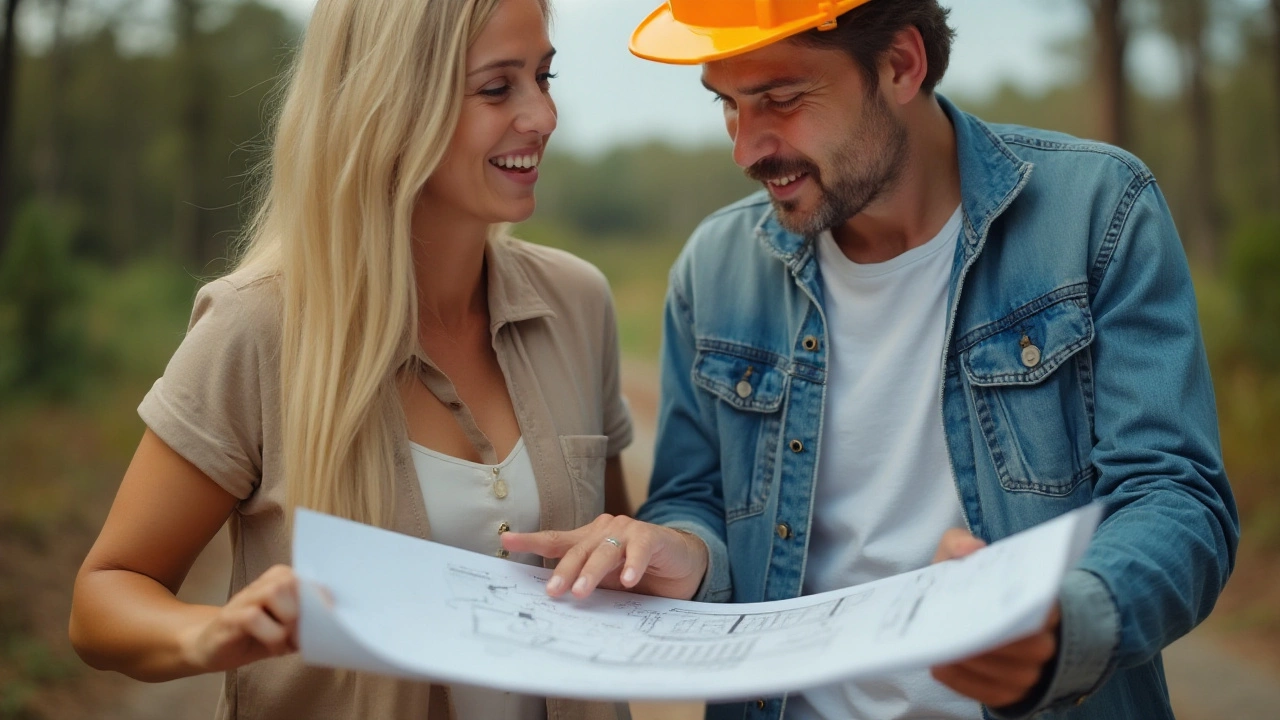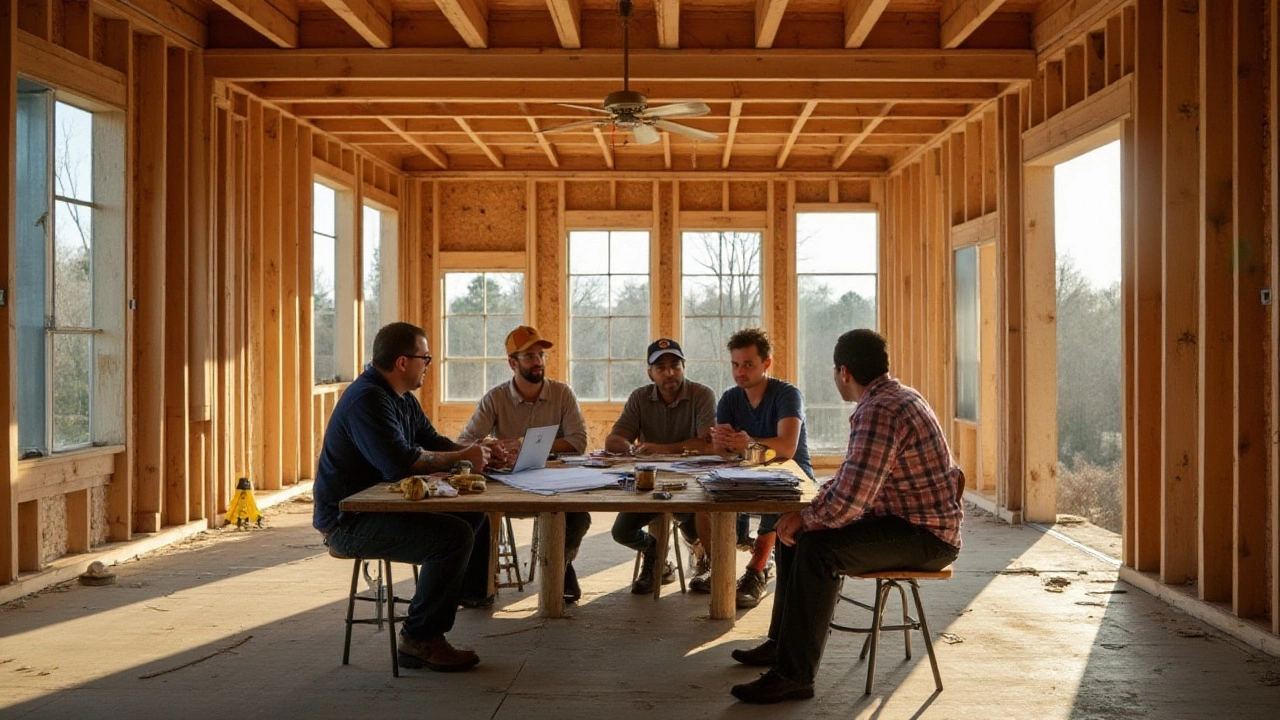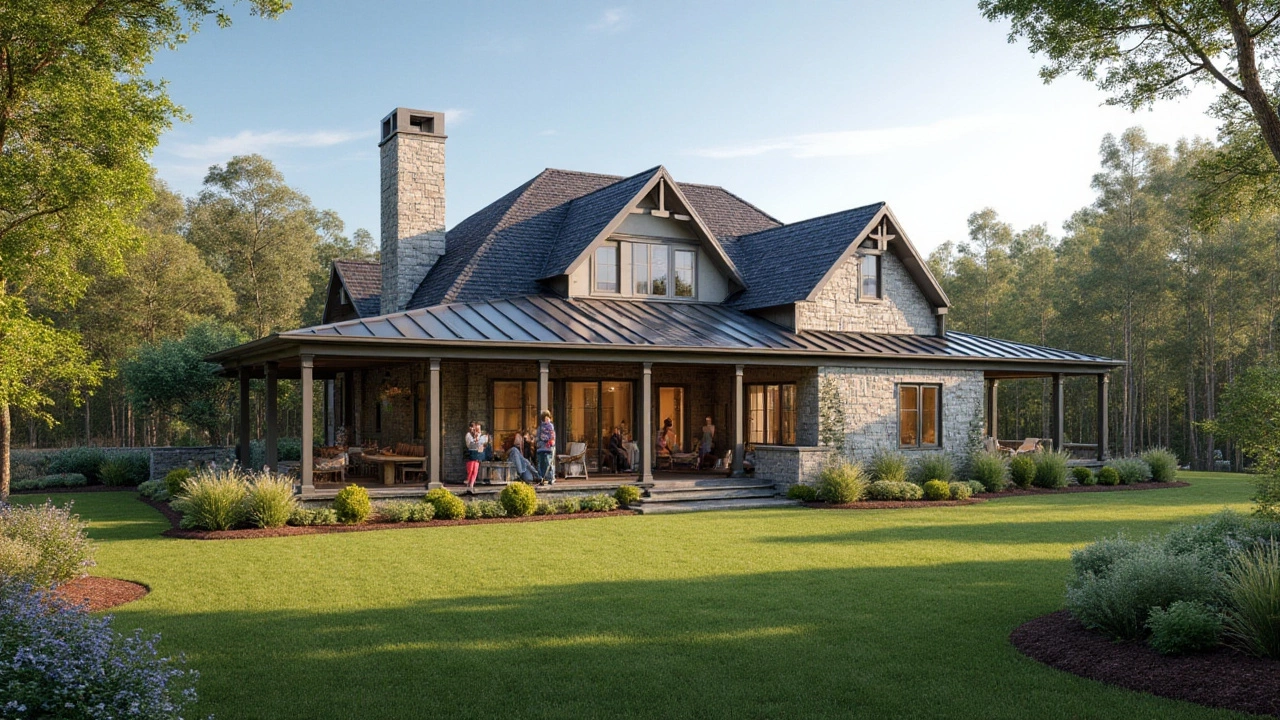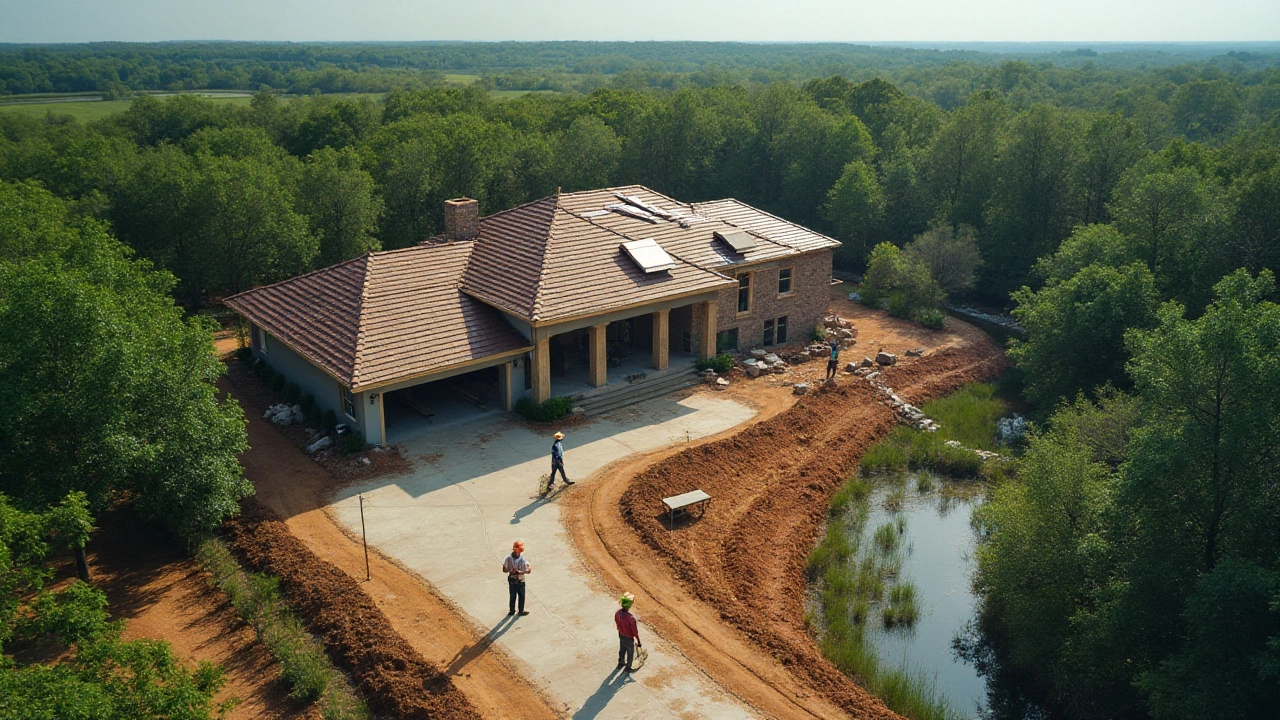Have you ever wondered about the costs involved in building your dream house in the heart of Louisiana? Here in 2025, the construction landscape comes with its unique set of challenges and opportunities. Whether you're starting from scratch or looking to expand your existing space, understanding the financial commitment of a 3,000 square-foot home in the Pelican State is essential.
From purchasing land to selecting the right materials, each decision you make influences the final price tag. Add to that the intricacies of permits and local building regulations, and the path to your new home may seem daunting. But fear not! With a bit of planning and some local insights, you'll be well on your way to turning blueprints into reality.
Land and Location
When embarking on the journey to build a new home in Louisiana, choosing the right location is pivotal. The state offers diverse landscapes, from the vibrant, bustling New Orleans to the tranquil settings of bayou country. Determining the ideal spot involves balancing your lifestyle desires and accessibility needs with budget constraints. Prices for land can vary greatly depending on the proximity to major cities, the local economy, and regional weather patterns. Coastal areas might steal your heart with their charm but can also bring about higher costs due to floodplain considerations and insurance requirements.
Another layer to navigate is Louisiana’s unique climate, which can impact construction. The state's subtropical climate brings warm, humid summers, which can affect building timelines and material choices. Understanding the weather patterns and their effect on construction schedules is crucial. You must also account for natural occurrences such as hurricanes. Building codes may require specific reinforcements that add to the construction budget. Design touches, like elevated foundations, are not just aesthetic choices; they help protect against rising waters and are essential for durability and safety.
Land availability can also fluctuate by locale. Urban areas naturally have less available land, often resulting in higher prices compared to more rural settings. Access to utilities like water, sewage systems, and electricity can significantly drive up the cost of preparing a site in more remote areas, making it essential to do thorough homework before settling on a location.
"Choosing the right plot is not just about the price per acre; it's about envisioning your life there," says local real estate expert John Romero.
Alongside these considerations, proximity to important amenities can’t be overlooked. Do you wish to be close to quality schools, medical facilities, shopping centers, or recreational areas? Such aspects of location can shape long-term satisfaction. It’s a balancing act between picturesque locales and practical necessities that will pay off in the long run. Building your dream home in the right location is an exciting task, and with the right knowledge, you can strike the perfect balance between cost and lifestyle aspirations.

Materials and Labor
Building a house is like piecing together an intricate puzzle, and understanding the necessary materials and labor is pivotal to assembling a captivating and safe 3,000 sq ft home. Imagine walking through stacks of freshly milled lumber waiting to transform into the skeletal frame of your new home. Here in Louisiana, the challenge of balancing durability with style means materials often reflect the environment. For instance, choosing termite-resistant wood is crucial due to the region’s humid subtropical climate. Using treated pine or cedar can mitigate risks and extend the building’s longevity while maintaining aesthetic appeal.
Concrete slabs remain the foundation staple, yet the type you select must align with local soil conditions to prevent future shifting. Innovative materials like Insulated Concrete Forms (ICFs) provide enhanced energy efficiency, a significant plus in regions fluctuating dramatically between the scorching summer heat and cool winter days. Opting for these modern solutions might slightly hike the initial expense, potentially offset by long-term savings on utility bills. As of 2025, the per-square-foot cost for basic to moderate installations of these materials ranges from $120 to $150, fluctuating based on design and finish choices.
When it comes to labor, skilled workers are the backbone of dream houses turning into homes. Construction labor costs can vary, typically making up about 30% to 50% of total expenses. In Louisiana, this percentage can be affected by the availability of local skilled artisans familiar with the regional architectural nuances. For instance, labor costs for specialized skills like custom woodworking or unique bricklaying may run higher compared to standard tasks. Employing local talent not only supports the regional economy but also ensures that your home captures the essence of Louisiana’s rich cultural tapestry.
"Investing in skilled labor is not just about immediate quality; it's about ensuring longevity and resilience," says renowned architect James Throttle, emphasizing that understanding the significance of experienced craftsmen is as crucial as selecting quality materials.
Don’t forget the hidden costs associated with materials and labor, such as transportation fees for bringing in specialty items or temporary housing for out-of-area craftsmen. As a homeowner, understanding these intricate components and appreciating the high price of skilled labor can shape your decisions during the construction process. It’s not merely about negotiating terms; it’s fostering respectful, beneficial relationships with those who will build your home. To accurately budget, consider creating a detailed spreadsheet to keep track of costs, accounting for potential fluctuations in pricing for materials given the market shifts in 2025.

Permits and Regulations
Navigating the landscape of permits and regulations in Louisiana requires a well-charted course. When building a home, especially one spreading over 3,000 square feet, understanding these procedures can both streamline your project and prevent potential pitfalls. In Louisiana, the permitting process is uniquely influenced by its distinct geography and climate, as the state strives to balance safe construction with environmental preservation. Flood zones are of particular concern, given the state's history with hurricanes and heavy rainfall. This means that securing flood insurance and passing elevation certificate checks can be crucial steps in your planning phase.
Local building codes, which can vary significantly among parishes, encompass everything from structural standards to energy efficiency guidelines. It’s essential to consult the latest codes and updates, engaging with experienced architects and contractors who understand local intricacies. Start by reaching out to your parish’s local government office or Planning and Building Department for a comprehensive overview of the requirements. Obtaining a building permit may seem daunting, but meticulous attention to these details not only protects your investment but ensures the safety and sustainability of your home.
A noteworthy aspect of the Louisiana building permit process is the need for a home building cost assessment, where detailed plans and cost estimates are meticulously reviewed. As part of this, builders must submit architectural drawings along with material specifics. It's not just paperwork; it’s a roadmap ensuring your project aligns with safety standards and aesthetic harmony with the surroundings. "When it comes to building in unique environments like Louisiana, it's essential that we look at the big picture: safety, sustainability, and beauty must all align," states renowned architect Lizbeth Andrews who specializes in sustainable design in Southern climates.
Don't overlook impact fees either, as new constructions may require additional investments into local infrastructure such as roads and public services. It's worth consulting with a local land use expert to decipher any cryptic zoning laws that might affect your home’s design or potential expansions. These experts can offer valuable insights, ensuring that your home-building dreams are compatible with municipal development plans. Essentially, taking this pro-active approach with permits and regulations isn't just about ticking boxes; it's about building a resilient, long-lasting home that's viable for generations.

Hidden Costs and Tips
Embarking on the journey of building a 3,000 square foot home in Louisiana is undoubtedly exciting, but it is crucial to be prepared for those sneaky expenses that can catch you off guard. Hidden costs can quickly turn a well-planned budget upside down; hence, being aware of them in advance can save both time and money. One such slippery expense often overlooked is the cost of site preparation. It's not uncommon for land in Louisiana to require extensive grading or clearing, especially if it's nestled in areas with dense vegetation or uneven terrain. Beyond just the aesthetic element, ensuring the land is properly graded can prevent drainage issues in the future, a common concern given Louisiana’s climate.
Another cost that many potential homeowners might not immediately consider is related to weatherproofing. Louisiana's humid subtropical climate, with its propensity for heavy rainfall and occasional hurricanes, means that investing in quality roofing and waterproofing is non-negotiable. The initial expenditure here could save thousands in damage repairs in the long term. Moreover, due to the state’s unique climatic challenges, energy efficiency becomes another essential factor. Homes in this region tend to have higher utility bills due to the need for cooling; thus, opting for energy-efficient windows, HVAC systems, and insulation might initially strain the budget but promises substantial savings over time.
Dealing with Permits
Then, there is the labyrinthine process of securing permits. Understandably, navigating the regulatory maze can be both time-consuming and costly. Permit fees can vary widely depending on the location and complexity of the project. In some instances, regulatory requirements may necessitate carrying out environmental impact studies, which can be expensive and delay the start of construction. It’s advisable to work closely with a local contractor familiar with Louisiana’s state and local building codes to alleviate some of these pressures. A seasoned professional will help ensure all documentation is in order, approvals are obtained in a timely manner, and potential pitfalls are avoided. To highlight this sentiment, consider"It’s not uncommon for homebuilders to face delays simply because of unfamiliarity with the permitting process," advises Elizabeth Morgan, a renowned architect with over two decades of experience working in the region.
Ongoing Maintenance
Finally, it's wise to remember that building a home is just the beginning. Ongoing maintenance costs can often be an afterthought for many homeowners. In the context of Louisiana, particular attention should be paid to pest control due to the prevalence of termites and other pests in the area. Regular inspections and treatment are crucial preventive measures. Additionally, high humidity levels can lead to mold, which means the upkeep of HVAC systems and appropriate ventilation is critical. To manage these hidden costs effectively, it’s beneficial to set aside a contingency fund that covers unforeseen expenses. This financial cushion ensures that any surprise setbacks don't derail your homeownership dreams.Approaching the home-building process with an awareness of these hidden costs will empower you to take proactive measures, allowing you to focus on the best aspects of building a new home in Louisiana—customizing it to suit your unique taste and needs.
